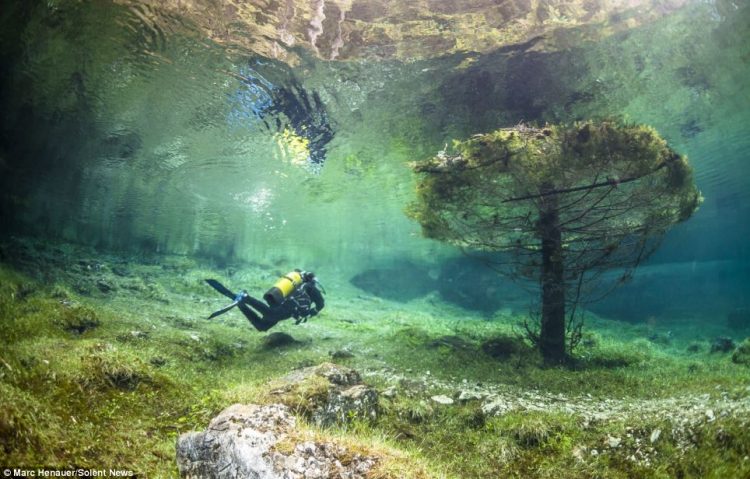Gruner See Park is also called Green Lake. It is a strange lake situated in Styria, Austria, near the town of Tragoss, located at the foot of the snow-capped Hochschwab mountains. In the winter, the green lake is only 1 to 2 meters deep, and the surrounding area is available to use as a county park.
But as the temperature rises in spring and summer, the ice and snow on the mountaintops start to melt and run down into the basin of land below. The Gruner See swells up to overwhelm the whole area, including the park. In summer, the lake reaches an extreme depth of around 12 meters and is said to look like the most majestic site.
The Gruner See supports a variety of fauna such as snails, water fleas, small crabs, fly larvae, and different species of trout. The whole year, visitors enjoy the majestic beauty of the green lake. They can leisurely stroll around the picturesque lagoon. They enjoy the fabulous landscape from one of the benches set near the water’s edge.
The Gruner See park gets it’s unique green coloring, and the name, from the grass and foliage beneath. Many thanks to the fresh snow melting the ice-cold water are crystal clear. Though the lake temperature is rather cold at 4 to 8 °C, yet. it is an admired place among divers who can feel the essence of green meadows in the edge zone of the lake chiefly in June when the water is at its highest.
The alpine grasses and flowers of the meadow are visible in full bloom under the water. Therefore, you can even see benches, a bridge, and walking trails. It is a particular favorite place for hikers; they love to hike at here. Starting July, the lake starts to recede and by winter, the lake is back to its original size, and the park comes back once more to the hikers.
Due to heavy load of tourist, that has occurred and expected damage of this sensitive environment, all watersports activities have been prohibited since 1 January 2016. Swimming, boats, and dogs will also be prohibited to limit the pollution of the lake. Hence, the below incredible images show a lake that floods every year, covering everything in the surrounding area.
Also, Read Heaven Lake! Best Magical and Peaceful Place on Earth

